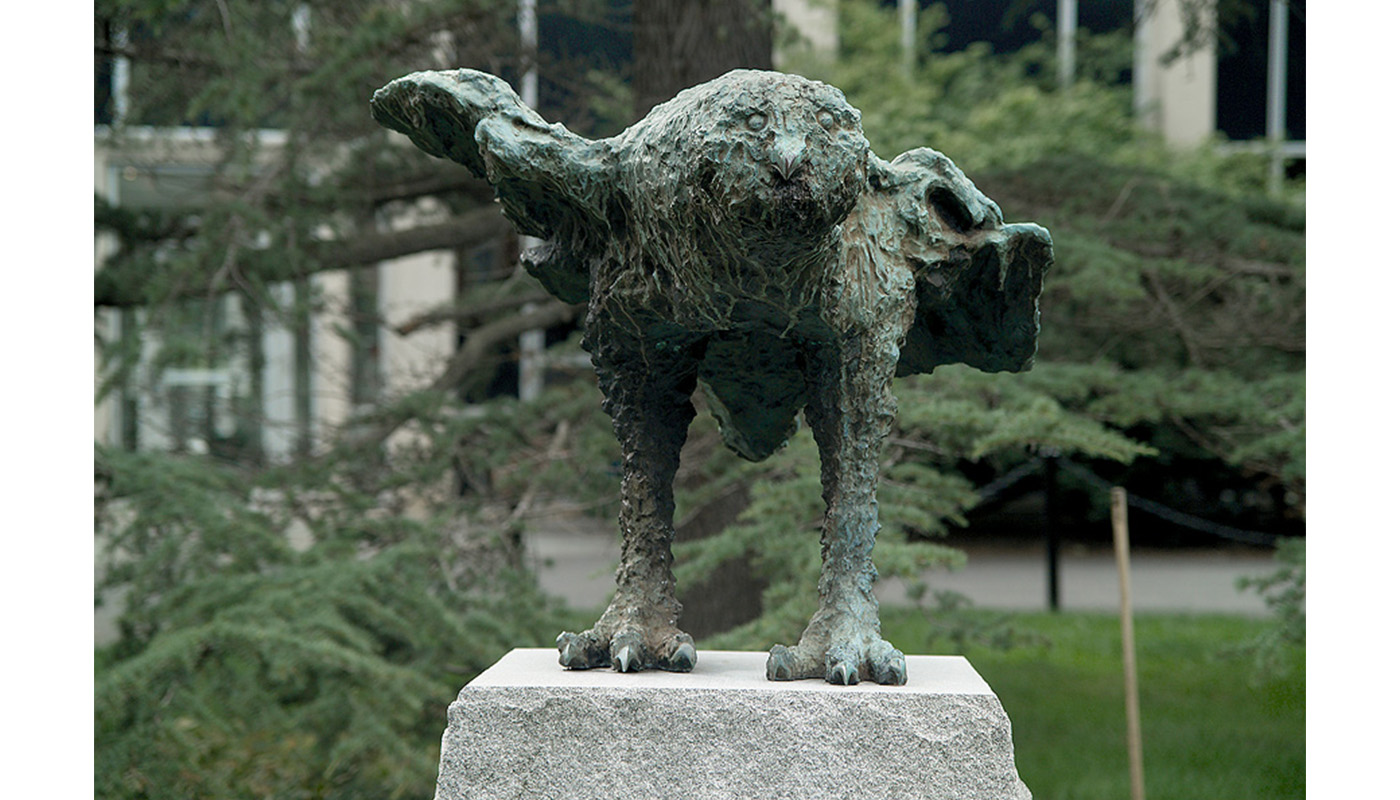
The Clamorous Owl
Maggie Kurkoski is a member of the Smith College class of 2012 and the Brown Post-Baccalaureate Curatorial Fellow in the Cunningham Center.
Outside of Wright Hall stands an unsettling sculpture. As a student at Smith, I often passed by this bird of prey going from Neilson Library to the Campus Center.
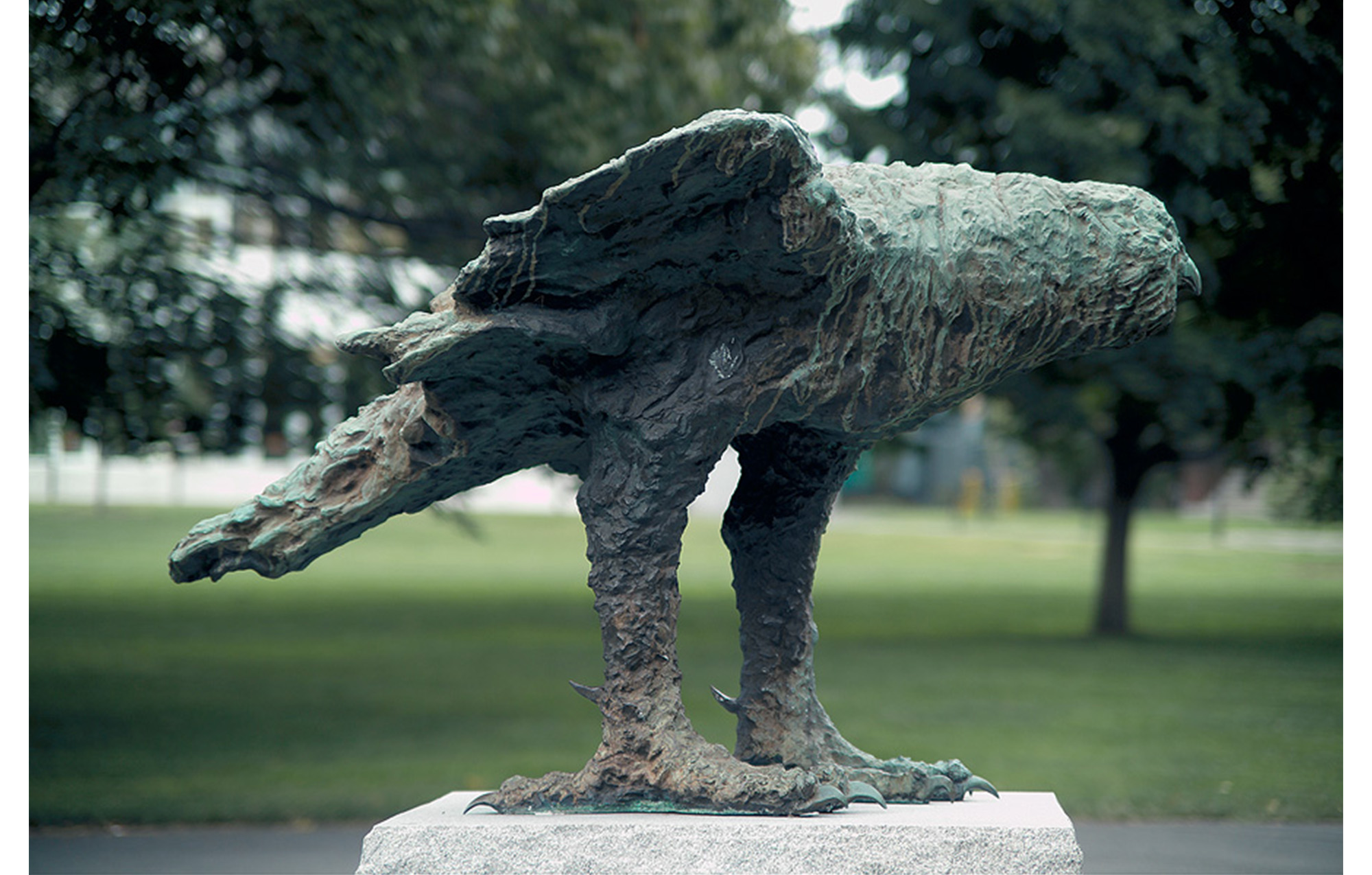
Leonard Baskin. American, 1922–2000. The Owl, 1962. Bronze. Anonymous gift. Photography by Petegorsky/Gipe. SC 1963.36.
Its wings are slightly outstretched, as if it’s about to take flight, and its huge talons emphasize its deadly power. The sculptor did not create a smooth surface, but left it mottled and textured. Its gaze is direct, even aggressive, and even now it leaves me slightly unsettled as I walk by.
A plaque identifies this bird of prey with lines from A Midsummer Night’s Dream:
The clamorous owl, that nightly hoots,
and wonders
at our quaint spirits (2.3.6-7)
Named The Owl, this piece was the creation of Leonard Baskin, who taught at Smith College between the years of 1953 and 1974. Baskin was a prolific artist who not only produced sculpture, but also hundreds of drawings, prints and artist books, many through his printing studio Gehenna Press.
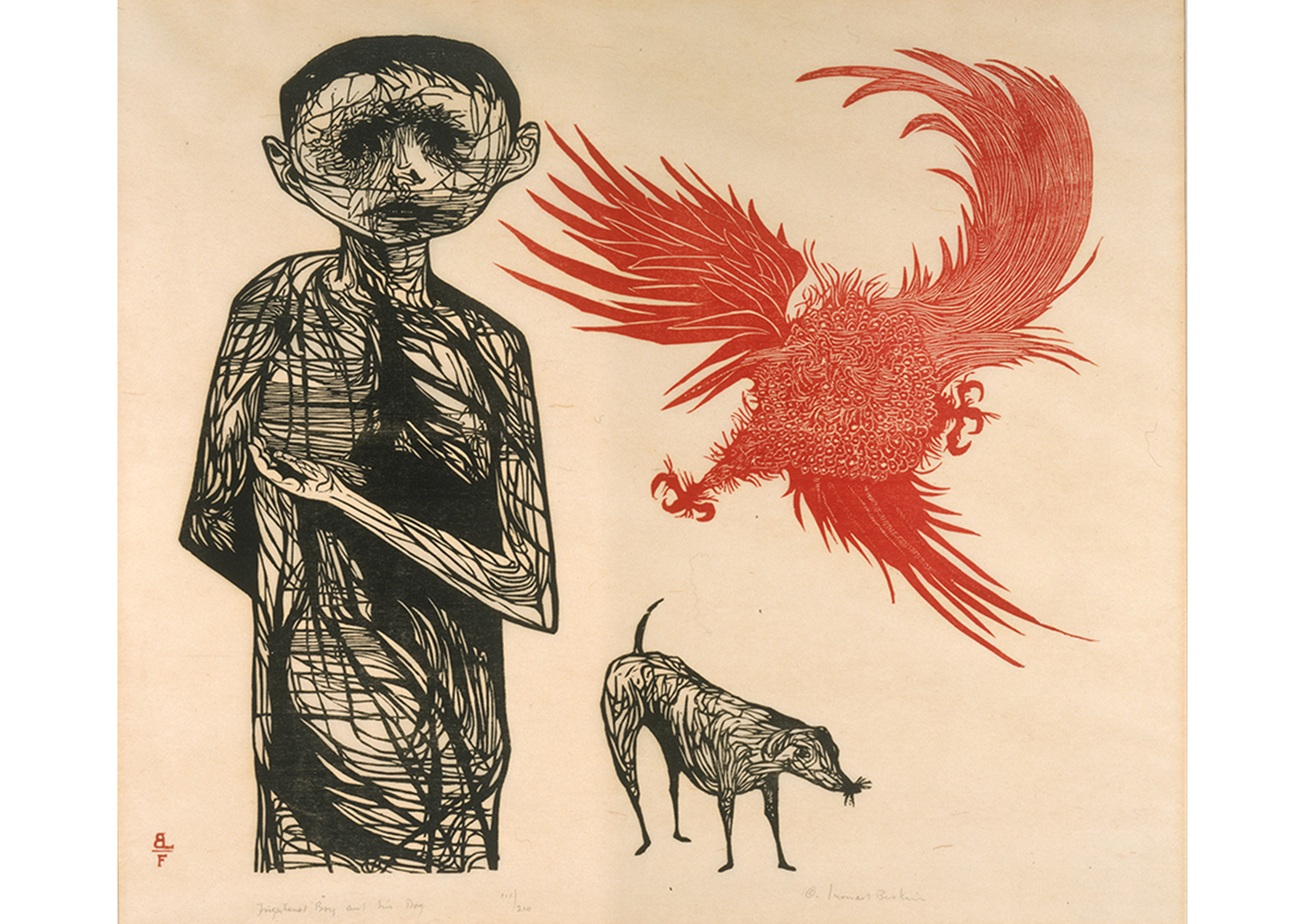
Leonard Baskin. American, 1922–2000. Frightened Boy and His Dog, 1954. Woodcut printed in black and red on paper. Date and source of acquisition unknown. Photography by Petegorsky/Gipe. SC 1973.54.
Looking into the Cunningham Center collection, I realized that owls, and similar raptors, crop up again and again in Baskin’s art. As the artist put it himself in 1963, "Owls obsess me. They're predators, always in control and always mysterious. Late one midsummer night I watched one for two hours. He was after the thousands of moths who were drawn to a light by my window. He grabbed at them with his claws, never missing a one, and their wings fell off all over his breast. He was beady-eyed and, in a horrible way, marvelous."
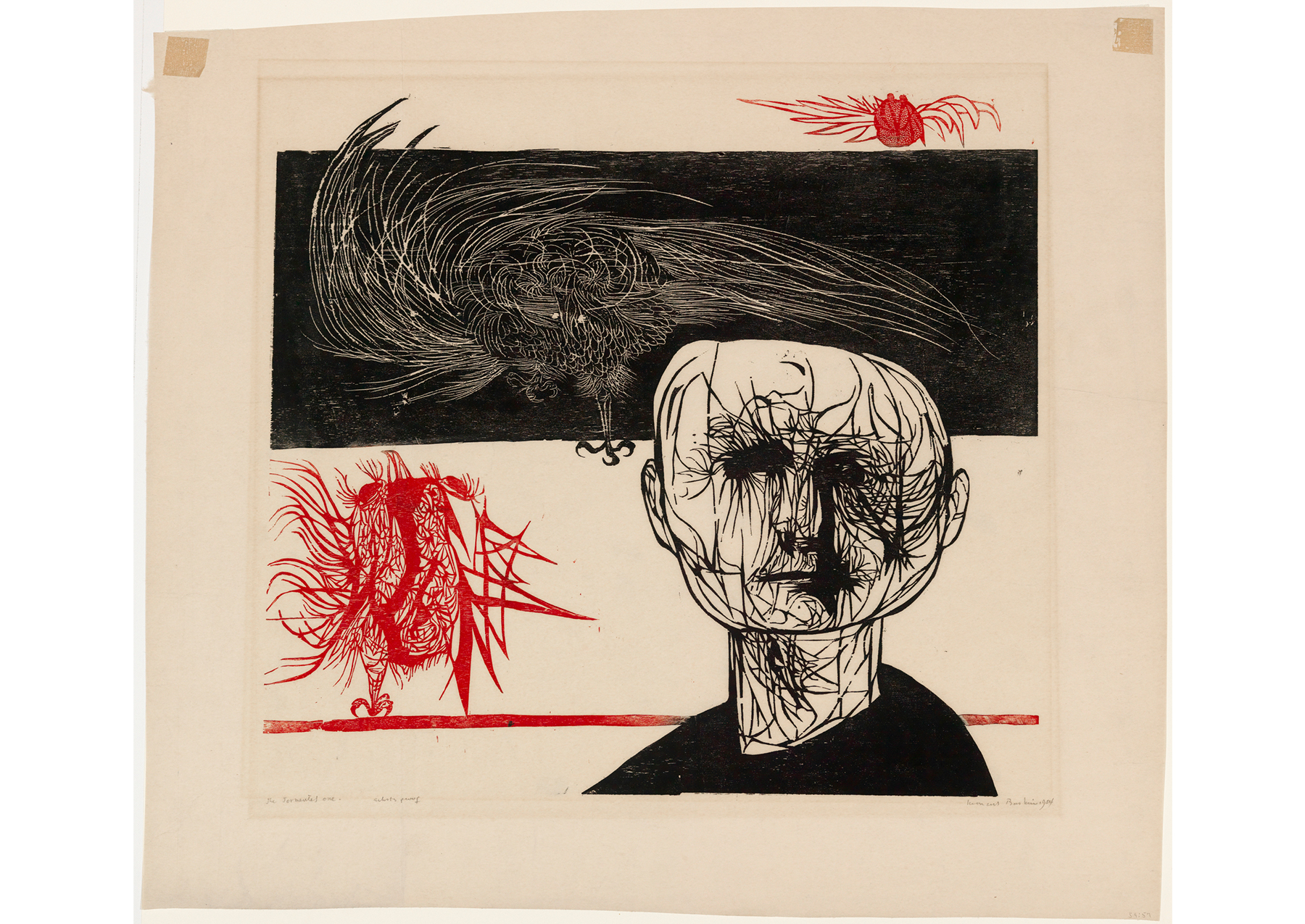
Leonard Baskin. American, 1922–2000. The Tormented One, 1954. Woodcut printed in black and red on paper. Purchased. Photography by Petegorsky/Gipe. SC 1954.57.
Baskin’s obsession with these destructive, meticulous creatures began long before he cast the sculpture near Wright. We have an artist’s proof of one work from 1960, two years earlier than the sculpture The Owl, and going by the same name.
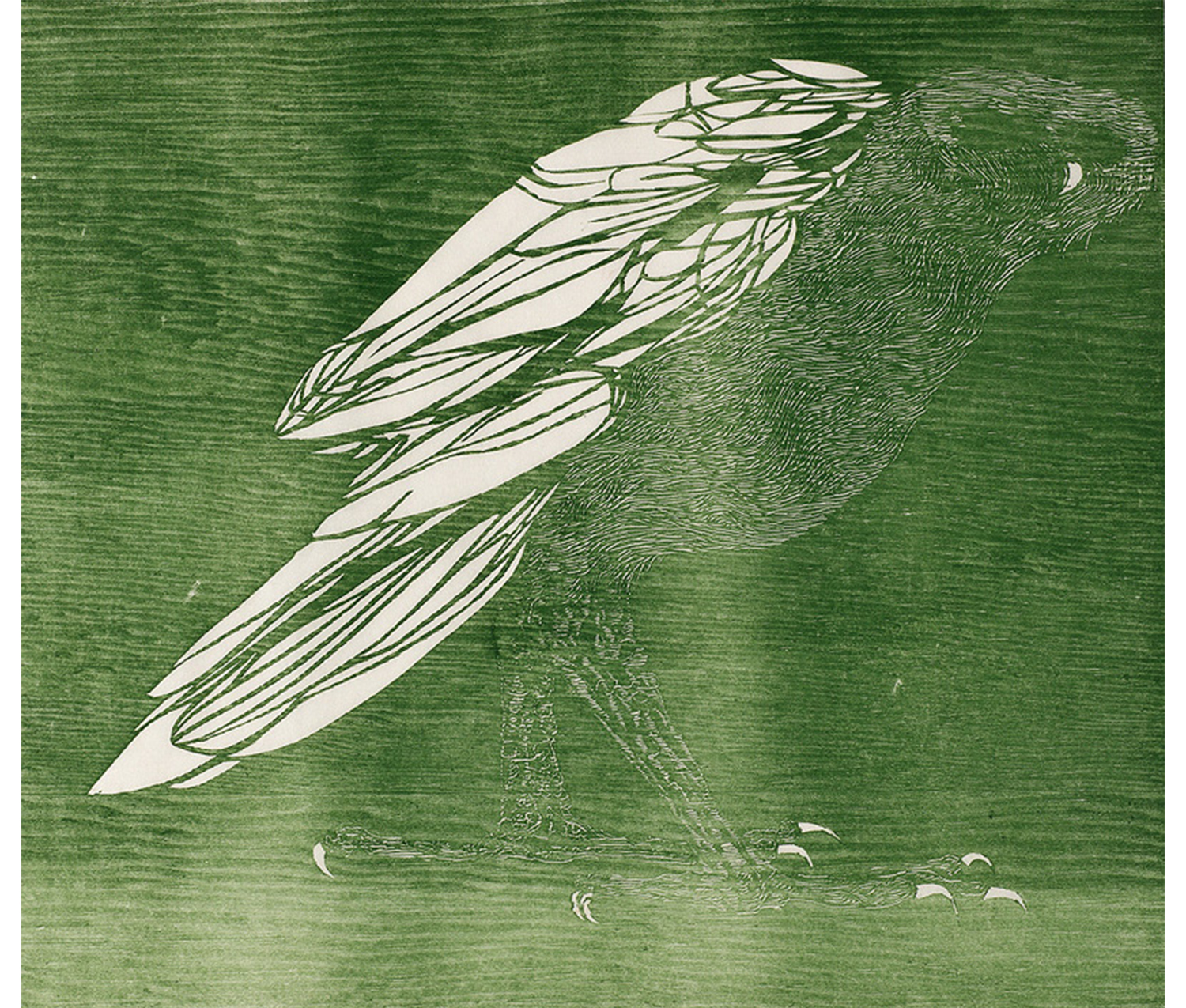
Leonard Baskin. American, 1922–2000. The Owl, 1960. Woodcut printed in green on paper. Gift of Priscilla Paine Van der Poel, class of 1928. Photography by Petegorsky/Gipe. SC 1963.83.
Printed in green, the work highlights the bird’s wings with large swaths of white, while most of its body is wrought in tight lines nearly lost in the background. In a way, these lines evoke in two dimensions the same textured surfaces Baskin later incorporates into his sculpture. Likewise, in both works, he emphasizes qualities that make this bird a predator: here, we see the talons and beak depicted as sharp points of white against the green. I can imagine those claws snatching at moth after moth outside Baskin’s window, a deadly hunter coolly ripping apart his prey. The Owl’s eyes are left dark, inscrutable and mysterious.
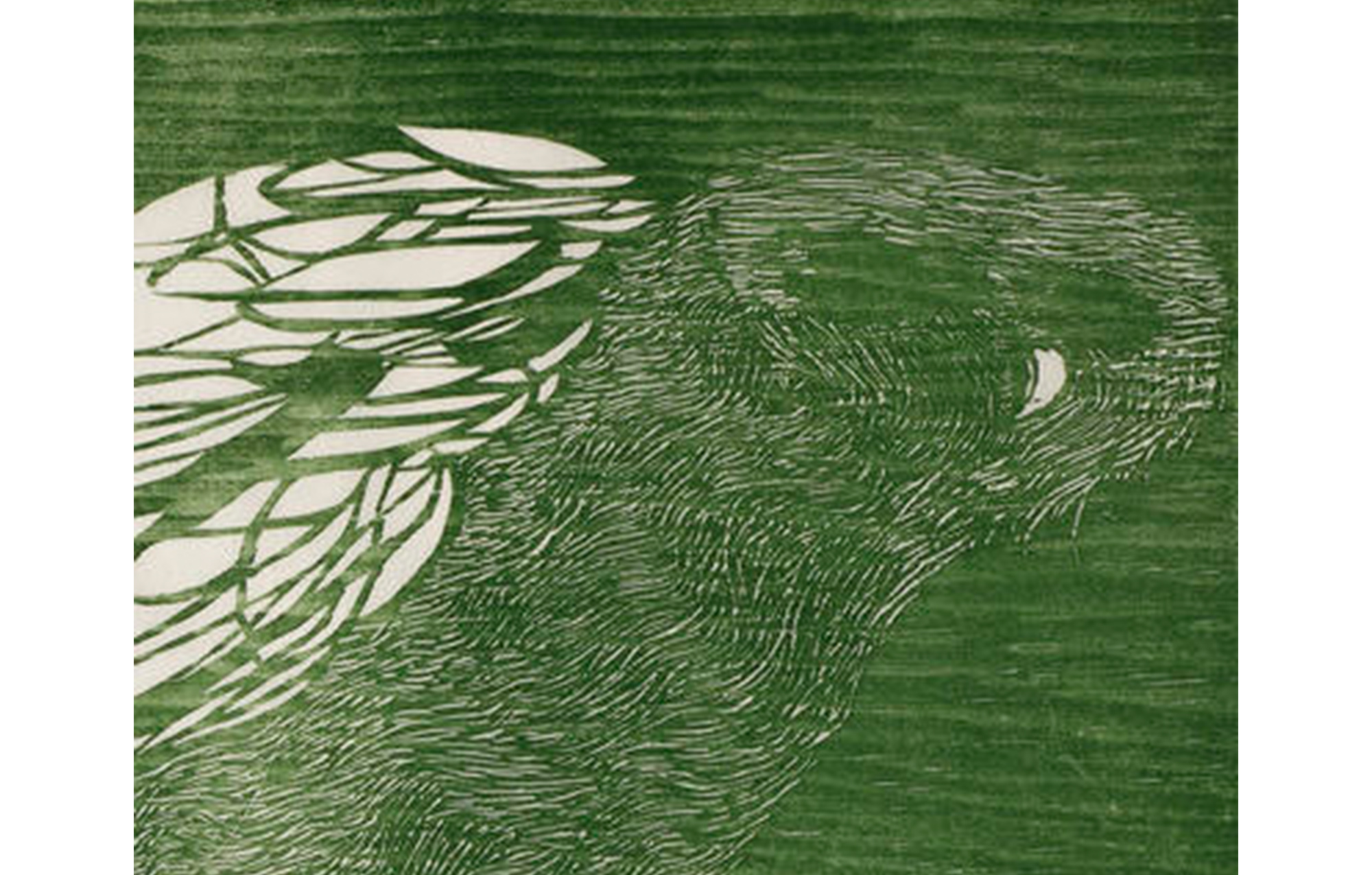
Detail of The Owl
In Baskin's own words, he was “foremost and fundamentally a sculptor.” Still, as his prints of owls show, many of the dynamic qualities that make Baskin’s sculpture powerful are also present in his woodcut prints. Both reveal a fascination with texture and form, and a deep appreciation for these powerful, mysterious predators.
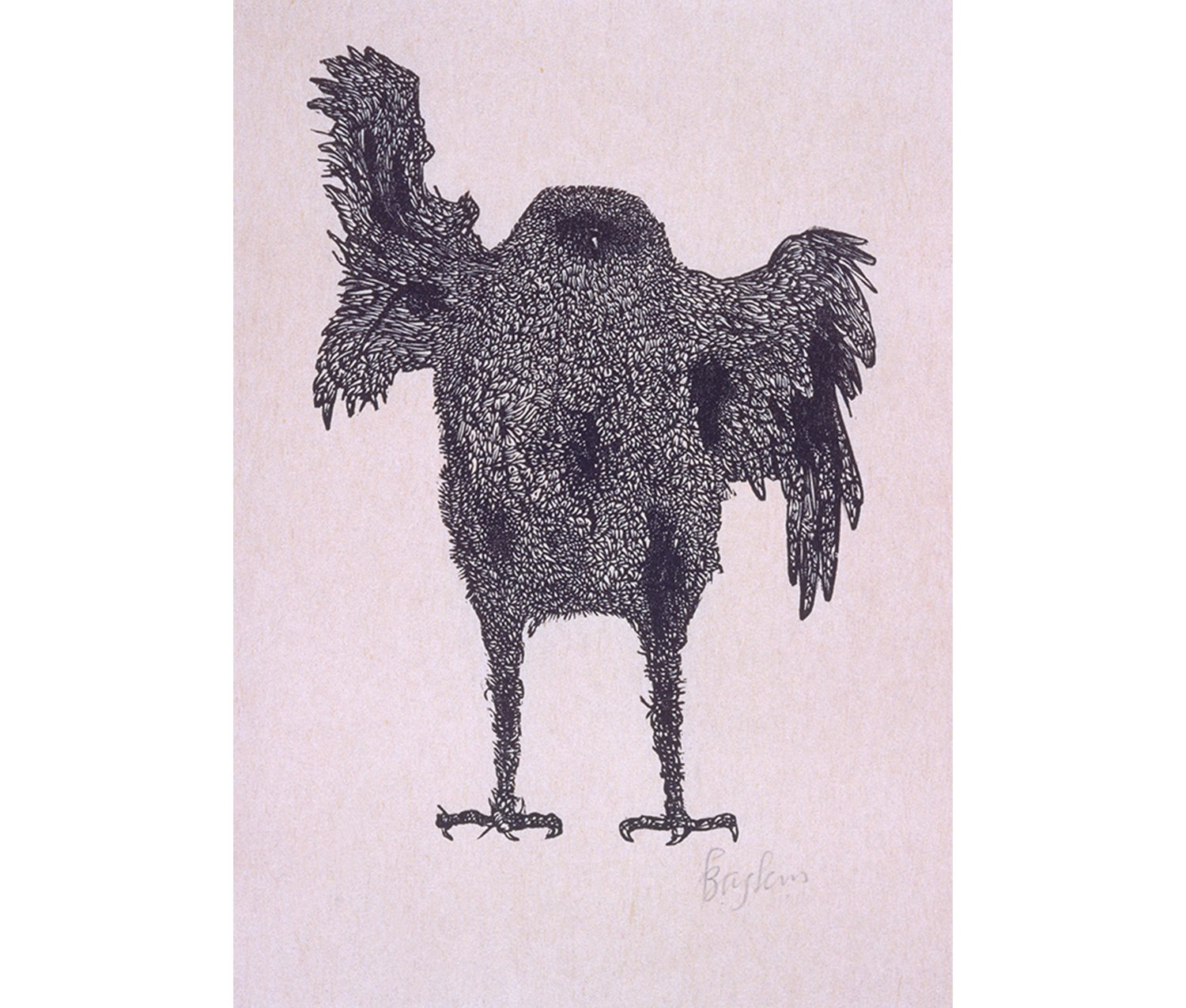
Leonard Baskin. American, 1922–2000. The Owl that Calls Upon the Night Speaks the Unbeliever's Fright from The Auguries of Innocence by William Blake, 1959. Wood engraving printed in black on paper. Gift of Mary Miller Schwartz, class of 1966, Cornelia Ann Miller and Winter N. Miller, class of 1995, in memory of their mother and grandmother Ruth Weinstein Miller, class of 1935. Photography by Petegorsky/Gipe. SC 1992.27.2.
From The Auguries of Innocence, by William Blake (1757–1827)
Every wolf’s and lion’s howl
Raises from hell a human soul. 20
The wild deer, wand’ring here and there,
Keeps the human soul from care.
The lamb misus’d breeds public strife,
And yet forgives the butcher’s knife.
The bat that flits at close of eve 25
Has left the brain that won’t believe.
The owl that calls upon the night
Speaks the unbeliever’s fright.